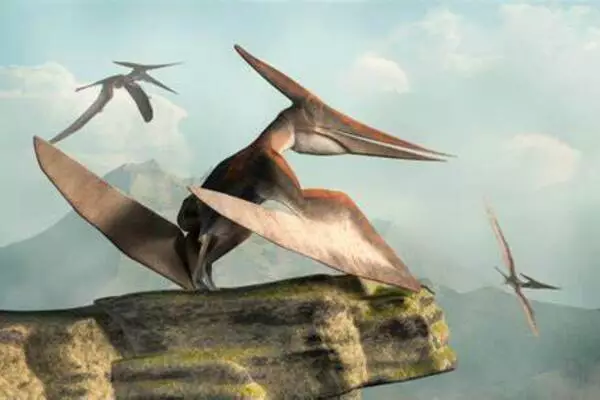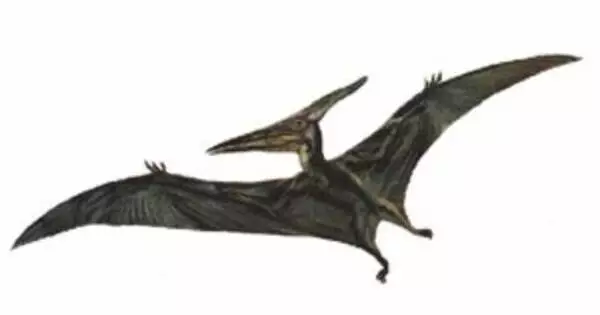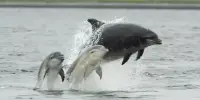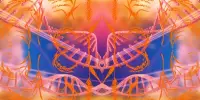The term “flying reptiles” usually refers to the extinct animal group known as pterosaurs. Pterosaurs were ancient flying reptiles that lived alongside dinosaurs during the Mesozoic Era. They were not dinosaurs, but they were related to them and belonged to the larger group of reptiles.
Did the pterosaurs, or flying reptiles from the dinosaur era, practice parental care? Scientists from Ireland (University College Cork), China (Nanjing and Yunnan Universities), and the United Kingdom (University of Bristol and Queen Mary University of London) have discovered that pterosaurs were indeed caring parents – but only the larger species.
This resolves a long-standing puzzle. A bird or pterosaur must have well-developed wings to be able to fly soon after hatching from the egg. Studies of smaller Jurassic pterosaurs revealed that their babies had large wings when they hatched and could have wobbled into flight within a few days of birth. But did this work for later pterosaurs that were much larger? Pterosaurs in the Cretaceous period typically had wingspans of 5 meters, with some reaching 10-15 meters, the size of a small glider.
This was a difficult project. We needed examples of pterosaurs where we had at least one hatchling or very young specimen as well as adults so we could study their growth rates. But baby pterosaurs are really rare.
Dr. Zixiao Yang
“This was a difficult project,” says the study leader, Dr Zixiao Yang from University College Cork (UCC). ‘We needed examples of pterosaurs where we had at least one hatchling or very young specimen as well as adults so we could study their growth rates. But baby pterosaurs are really rare.”
Dr. Yang worked on the study with Professors Baoyu Jiang of Nanjing University, Michael Benton of the University of Bristol, Xu Xing of Yunnan University, and Maria McNamara of UCC.
“Fortunately, we were able to use some classic Jurassic specimens from Europe and Cretaceous specimens from North America, as well as new finds from China.” We were able to test for differences in the relative growth of different parts of the body by measuring the skulls, backbones, wings, and hind legs.”

The research focussed on testing the allometry, or how the creatures’ characteristics changed with size.
“We are all familiar with allometry in human babies, puppies, and kittens – their heads, eyes, and knees are huge, and the rest of the body grows faster to get to adult proportions. It’s the same with many animals, including dinosaurs and pterosaurs. The babies have cute faces, with short noses, big eyes, and big heads,” Dr Yang said.
“The small, bird-sized, Jurassic pterosaurs were born with large wings and strong arms and legs, evidence that the babies could fly from birth. As they grew from baby to adult, their arms and legs showed negative allometry, meaning they started large and were then growing more slowly than the rest of the body.”
“But it was different for the Cretaceous giants. They also started as small babies, but the key limb bones show positive allometry through growth, suggesting a very different developmental model.”
“This means that the pterosaur giants sacrificed low-input childcare in order to grow massive as adults.” Because it saves energy, minimal childcare makes sense in the early evolutionary history of these ancient reptiles. However, the larger pterosaurs faced a problem in order to grow large: it took much longer to become an adult, so parents needed to protect their young from accidents. Because of egg size constraints, all pterosaur babies, large and small, were small. Investing in childcare by having non-flying babies was offset evolutionary by allowing pterosaurs to grow to truly enormous sizes.”
“Today, we see the same thing in birds and mammals. Some birds can fly when they are very young, and some mammals, such as cattle and antelopes, can walk the day they are born. However, this type of behavior is dangerous for the babies because they are often clumsy and easy prey for predators; it is also costly for the mother because the babies must have highly developed wings or legs at the time of birth. Extinct pterosaurs exhibit the same behavior. They were limited in maximum body size until the end of the Jurassic, when their parental care behavior changed and they were able to achieve enormous sizes.”
















